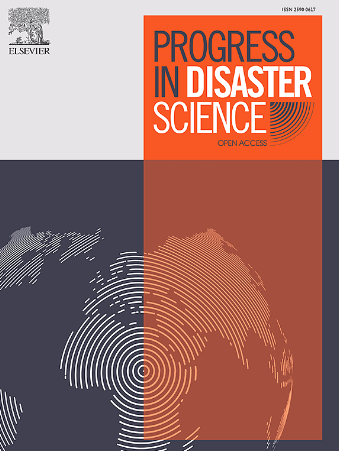Sedimentation enhancement and its retention through integration of vegetation with permeable groin-like structure in tidal river
IF 3.8
Q3 ENVIRONMENTAL SCIENCES
引用次数: 0
Abstract
Sediment management in the Ganges-Brahmaputra-Meghna (GBM) delta system is considered as one of the challenging issues, even though several studies clarified that unlike many other deltas, it is receiving sufficient sediment to counterbalance the sea level rise. Therefore, it is important to materialize such potential using appropriate techniques through utilizing the natural power of the flow-sediment regime, especially in the tidal rivers. Towards the development of nature-based solution (NbS), the principles of bandal-like structure, a V shape permeable groin-like structure was designed for the bidirectional tidal environments and applied in a tidal reach of the river Pyra. It is found that the structure has a high potential to enhance sedimentation along the bank line, while having difficulty in retaining the trapped sediment within the complex flow-sediment regime of tidal environment. To overcome such a problem, different types of vegetation are integrated with this structure to test the potentiality of vegetation in accelerating the sedimentation and its retention in the study site. Through systematic monitoring of the growth of vegetation and their performance it was found that only the site-specific native vegetation (Hogla and Shoila) grew well, while other planted species did not survive. Moreover, continuous maintenance and proper nursing of plants were required against the hydrodynamic stresses and human and animal interventions till their maturity. Several parameters related to vegetation-flow-sediment data were collected by using ADCP, Eco sounder, total station, and soil sampling to clarify the changes in flow and soil parameters due to vegetation. The results reveal that the cohesiveness of the soil increases by about 72–110 % and flow velocity reduces by 35–40 % in the area with densely grown vegetation having flow depth < 5 m. While velocity reduction is relatively low (10–15 %) in the area with sparsely grown vegetation and having flow depth > 5 m. Such flow reduction resulted in enhanced sedimentation and deceased erosion, whereas the increased soil cohesiveness resulted in retention of already deposited soil and bank and bed stabilization.
通过在潮汐河流中将植被与可渗透的沟槽状结构相结合,加强沉积作用并留住沉积物
恒河-布拉马普特拉河-额尔古纳河(GBM)三角洲系统的沉积物管理被认为是具有挑战性的问题之一,尽管多项研究表明,与其他许多三角洲不同,恒河-布拉马普特拉河-额尔古纳河(GBM)三角洲接收的沉积物足以抵消海平面上升的影响。因此,重要的是要利用适当的技术,通过利用水流-沉积物系统的自然力量来发挥这种潜力,尤其是在潮汐河流中。为了开发基于自然的解决方案(NbS),根据带状结构的原理,设计了一种针对双向潮汐环境的 V 型透水沟槽结构,并将其应用于派拉河的潮汐河段。研究发现,该结构在加强沿岸沉积作用方面具有很大潜力,但在潮汐环境复杂的水流-沉积物系统中难以截留沉积物。为了克服这一问题,研究人员将不同类型的植被与该结构结合起来,以测试植被在加速沉积物沉积和滞留沉积物方面的潜力。通过系统监测植被的生长情况和表现,发现只有特定地点的本地植被(Hogla 和 Shoila)生长良好,而其他种植物种则无法存活。此外,还需要持续维护和适当养护植物,使其免受水动力压力和人畜干扰,直至成熟。通过 ADCP、Eco 测深仪、全站仪和土壤取样,收集了与植被-水流-沉积物数据相关的多个参数,以明确植被对水流和土壤参数的影响。结果表明,在植被茂密、水流深度大于 5 米的区域,土壤的粘稠度增加了约 72-110%,流速降低了 35-40%;而在植被稀疏、水流深度大于 5 米的区域,流速降低幅度相对较低(10-15%)。
本文章由计算机程序翻译,如有差异,请以英文原文为准。
求助全文
约1分钟内获得全文
求助全文
来源期刊

Progress in Disaster Science
Social Sciences-Safety Research
CiteScore
14.60
自引率
3.20%
发文量
51
审稿时长
12 weeks
期刊介绍:
Progress in Disaster Science is a Gold Open Access journal focusing on integrating research and policy in disaster research, and publishes original research papers and invited viewpoint articles on disaster risk reduction; response; emergency management and recovery.
A key part of the Journal's Publication output will see key experts invited to assess and comment on the current trends in disaster research, as well as highlight key papers.
 求助内容:
求助内容: 应助结果提醒方式:
应助结果提醒方式:


